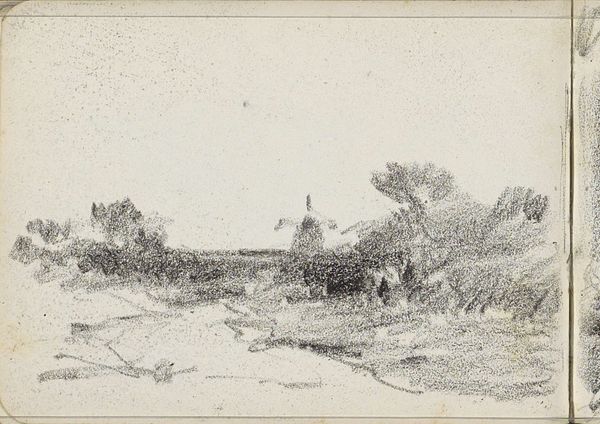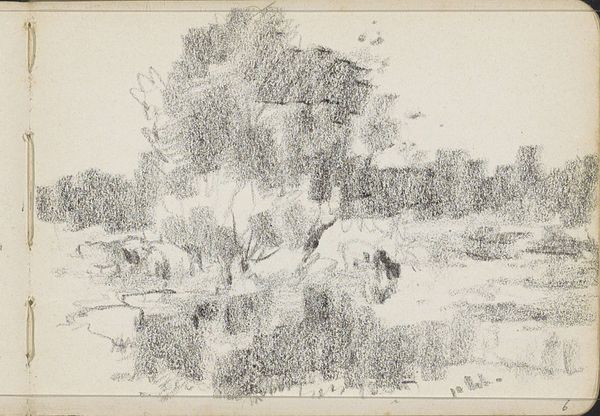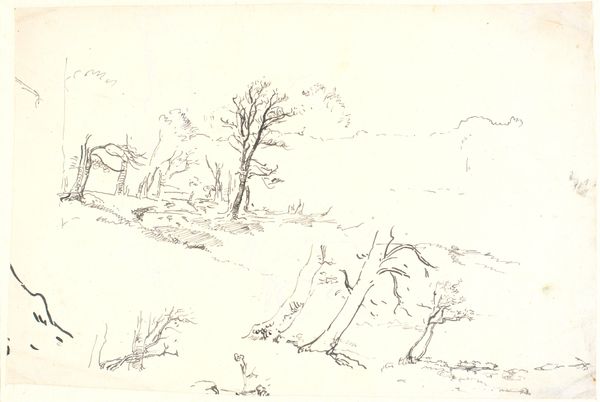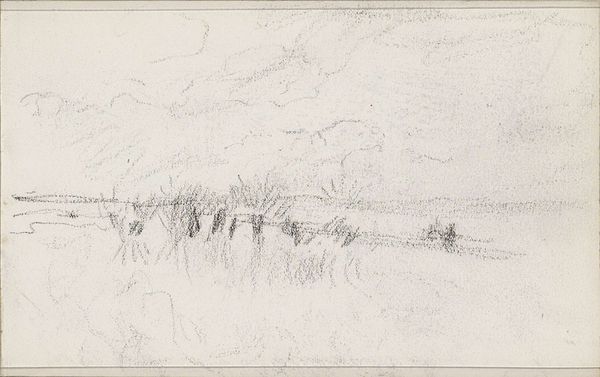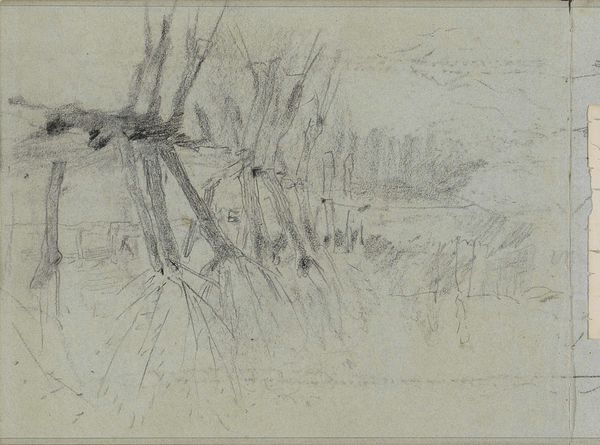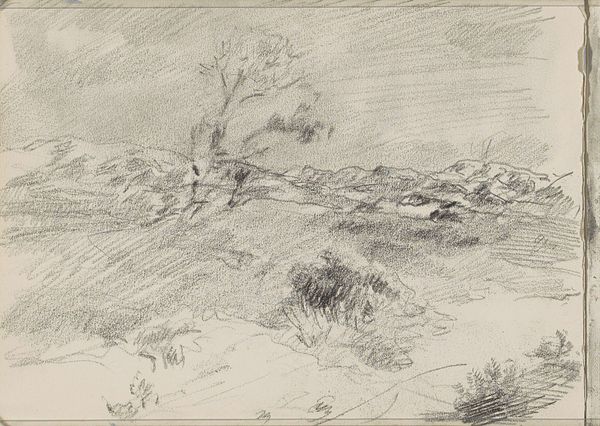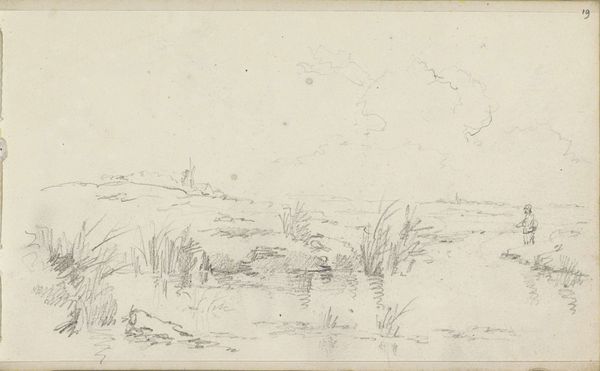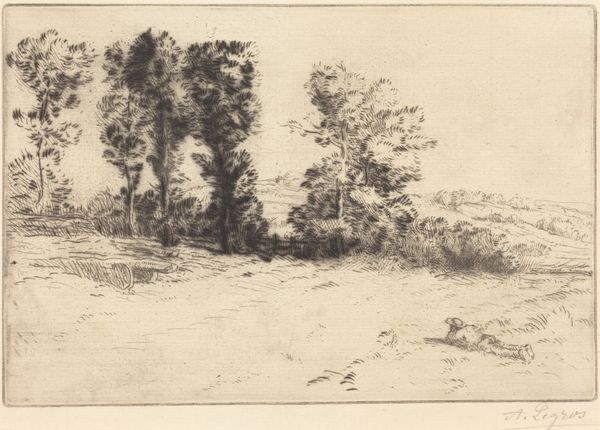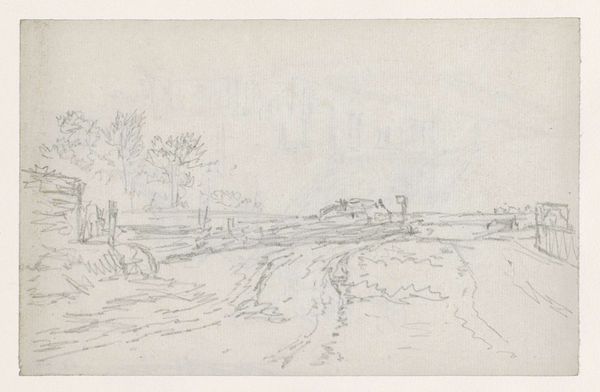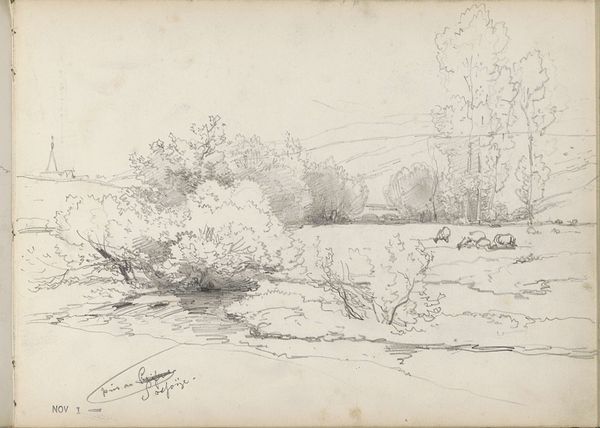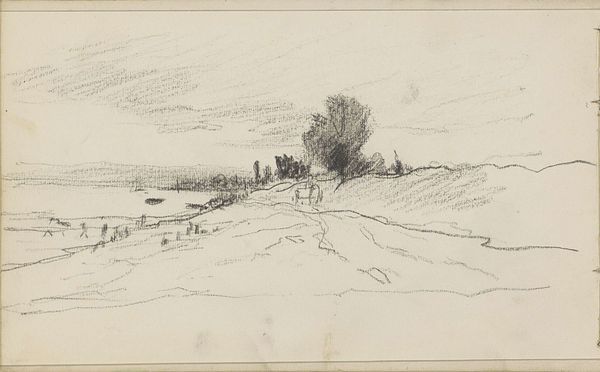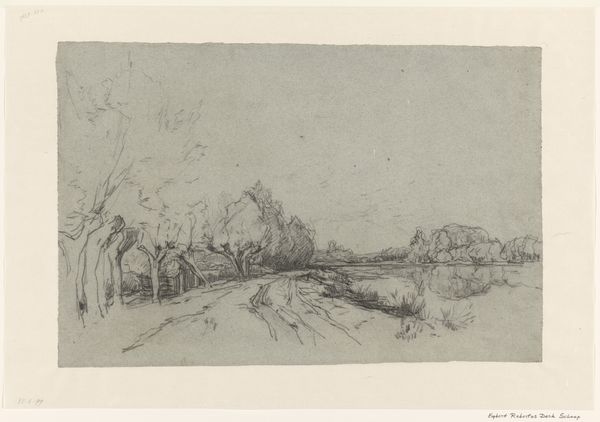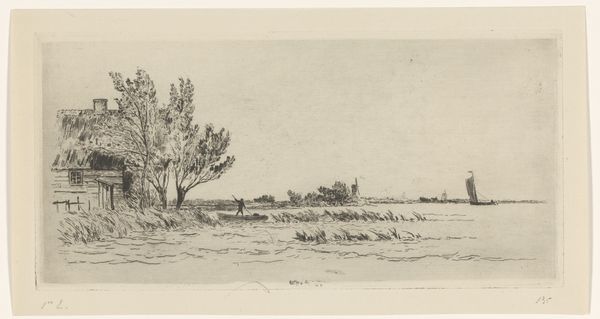
Dimensions: height 116 mm, width 162 mm
Copyright: Rijks Museum: Open Domain
Willem Cornelis Rip rendered this landscape sketch with graphite on paper. It invites us to consider the role of art in shaping our perception of the natural world. Rip was working in the Netherlands during a period of significant social and economic change. The late 19th century witnessed the rise of industrialization and urbanization, leading to a growing divide between urban and rural life. Artists like Rip, trained in the traditions of the Hague School, often sought to capture the beauty and tranquility of the Dutch countryside, offering a nostalgic vision of a simpler, pre-industrial past. This image creates meaning through subtle visual codes. The soft, muted tones and loose, gestural lines evoke a sense of peace and serenity, inviting the viewer to escape the stresses of modern life and reconnect with nature. To fully understand a work like this, the art historian will often turn to archival materials, such as letters, diaries, and exhibition catalogues. These resources can provide valuable insights into the artist's intentions and the social and cultural context in which the work was created.
Comments
No comments
Be the first to comment and join the conversation on the ultimate creative platform.
